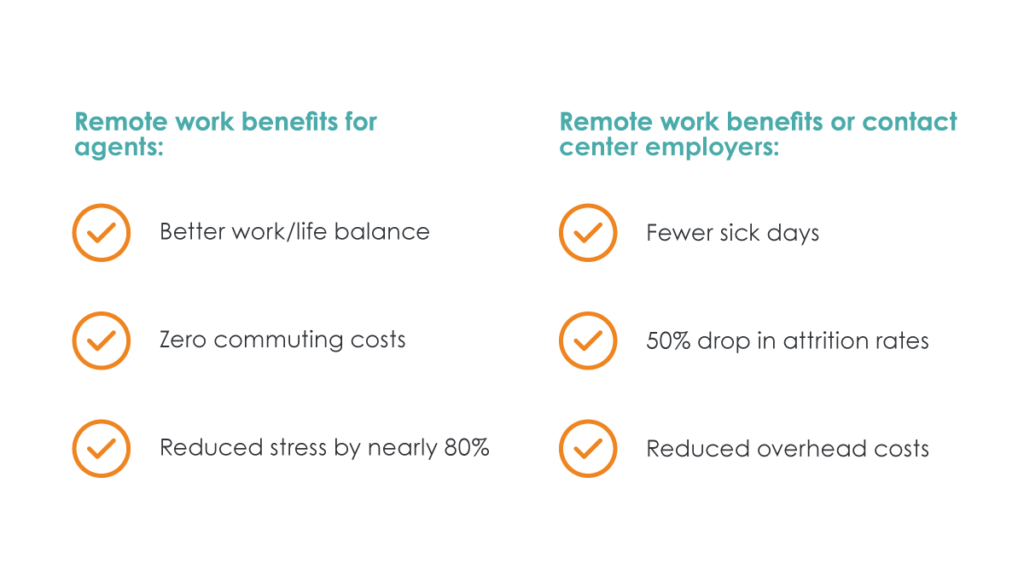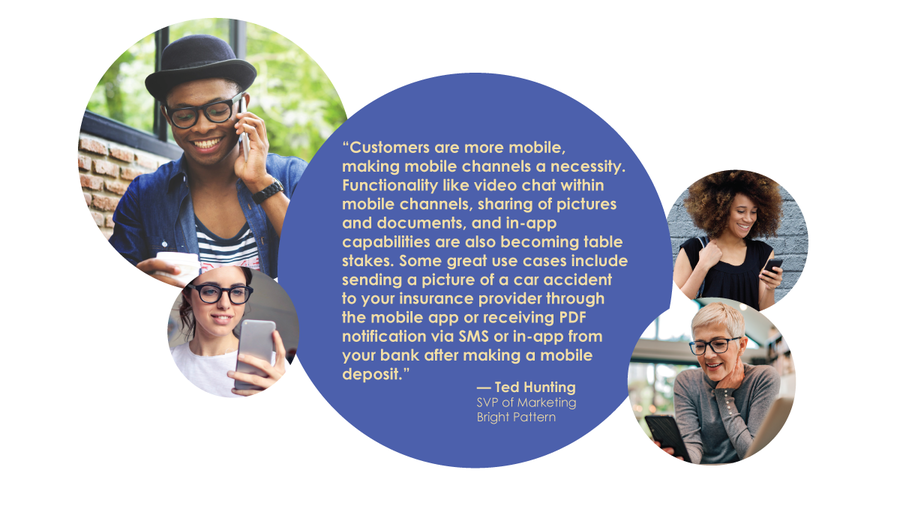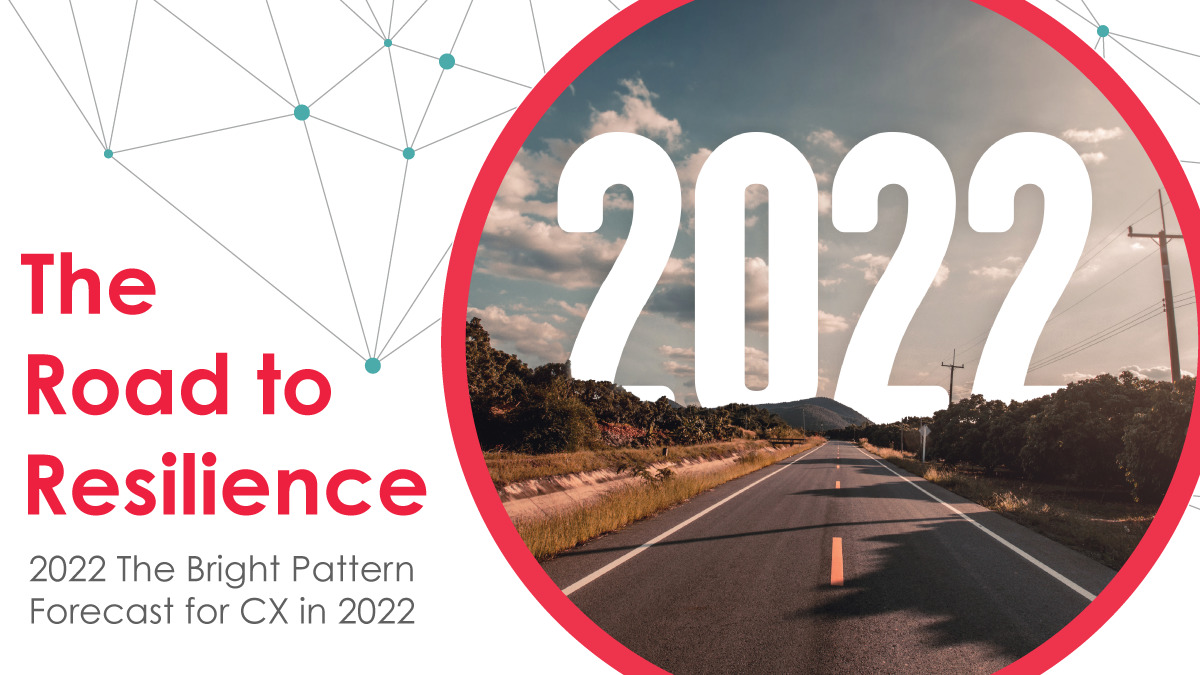Last week we published a blog “2022 CX Challenges and the Road to Resilience” which talked about three of the largest challenges the CX industry faces in 2022 due to the pandemic which include; inflation, supply chain issues, and the great resignation. In this blog, we will talk about the technology, strategies, and trends which will help CX teams thrive in this new world.
Any Agent. Any Time. Anywhere.
The remote agent is here to stay. Companies who thought remote work was a temporary fix are fast realizing that no one wants to give up the benefits of working from home. For the contact center, it is a no-brainer.

But turning on remote agents is not an easy process unless a company has the right technology. For example, accessing premise-based systems involves security concerns and phone quality at home may be poor. But with an all-in-one cloud contact center like Bright Pattern, remote agents can be turned on in literally days with built-in security, softphones, and quality checks.
Since many on-premise systems cannot be easily accessed, it’s imperative to use cloud-based contact center systems, like Bright Pattern, that can be launched in just days or weeks and doesn’t require a VPN or special software. Also, since agents don’t typically have complex phone systems or other hardware like headsets in their homes, the software must include a softphone to ensure the highest quality connection for both the agent and the customer.
Remote agents may need to deal with their own personal crises like finding child care, homeschooling, or caring for ill or elderly family members. Companies that utilize remote agents should prioritize their employees’ mental health by keeping work and break schedules consistent, providing a variety of mental health resources, and offering employees off-site company retreats and/ or team-building exercises.
One other glaring issue facing remote agents is the lack of comradery, which can lead to loneliness in some agents. As humans, we crave contact and relationships with others and seek validation and/or critique for our ideas or performance. In a traditional contact center setting, it is easy to get feedback from peers and supervisors alike and share ideas and tribal knowledge —just walk over to their desk or the coffee area. In the remote contact center, enabling remote agents to have this same level of communication and sharing is essential. Apps like Microsoft Teams can easily facilitate one-on-one or group communication. And when the contact center platform has built-in integration to Teams (like Bright Pattern), the communication benefits of Teams can be used to create an ideal CX platform for remote workers. This allows dispersed contact center agents to communicate with other contact center agents or supervisors for help or even expert resources anywhere in the company to better help customers. You can bring every company employee together to help offer a better customer experience, not just traditional contact center agents.
Also critical is the ability for supervisors to monitor and coach their remote agents. For instance, an agent seat map that shows CSAT by agent allows supervisors the ability to help agents improve their performance. You can also implement scoring, grading, and coaching solutions (like Bright Pattern’s Omni QM) to help out remote agents and help them become better knowledge workers.
Dedicated to Mobile
Mobile phone use is up, way up. According to one recent survey, 39% of participants stated that they were relying more on their phones due to social distancing. That same survey also showed a 23% increase in consumers using apps for shopping. In our 2020 CX Trends, we discussed why companies should prioritize mobile over other channels when it comes to CX. With the expansion of 5G networks, dual-screen devices that promote multitasking, and Google’s mobile-first indexing, we don’t see this trend slowing down after the pandemic is over.
Another trend in CX is the shift to powerful, mobile-based social channels. Google My Business (GMB), Apple Business, and Facebook were initially niche players with early adoption from smaller companies that didn’t have the resources or time to set up full-fledged websites or apps. However, GMB, Apple Business, and Facebook have grown exponentially and now offer asynchronous messaging and posts to enhance a company’s feedback loop. Additionally, these services work across their respective ecosystems, so whether a customer is using search, maps, or a voice assistant, they can easily interact with a business.
In addition to social media channels, messaging apps like Facebook Messenger, WeChat, WhatsApp, Line, Viber, Telegram, and others should be considered in the post-pandemic contact center. These powerful apps not only allow for asynchronous communication on mobile devices, but also lets customers and agents share files, pictures, or videos. This can be an incredibly useful tool when specific instructions or directions are needed like showing how to install a smart home device or sending terms and conditions for an event.
“Customers are more mobile, making mobile channels a necessity. Functionality like video chat within mobile channels, sharing of pictures and documents, and in-app capabilities are also becoming table stakes. Some great use cases include sending a picture of a car accident to your insurance provider through the mobile app or receiving PDF notification via SMS or in-app from your bank after making a mobile deposit.”

One great development in mobile is the ability for everyone who works for a company to help with the customer experience. A practical application of this is our work for a large Australian retailer. We put contact center capability in the hands of everyone in the company and allowed shop floor workers to enhance the customer journey. Beating out key players like Amazon Connect, MS Teams, and Cisco Jabber, the Bright Pattern mobile app enables employees to communicate with customers through voice, SMS, webchat, and messenger apps.




